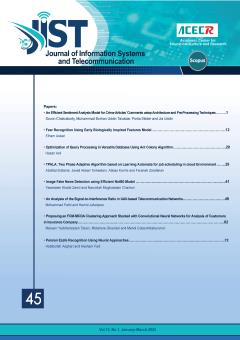Social network analysis is an important problem that has been attracting a great deal of attention in recent years. Such networks provide users many different applications and features; as a result, they have been mentioned as the most important event of recent decades.
More
Social network analysis is an important problem that has been attracting a great deal of attention in recent years. Such networks provide users many different applications and features; as a result, they have been mentioned as the most important event of recent decades. Using features that are available in the social networks, first discovering a complete and comprehensive communication should be done. Many methods have been proposed to explore the community, which are community detections through link analysis and nodes content. Most of the research exploring the social communication network only focuses on the one method, while attention to only one of the methods would be a confusion and incomplete exploration. Community detections is generally associated with graph clustering, most clustering methods rely on analyzing links, and no attention to regarding the content that improves the clustering quality. In this paper, to scalable community detections, an integral algorithm is proposed to cluster graphs according to link structure and nodes content, and it aims finding clusters in the groups with similar features. To implement the Integral Algorithm, first a graph is weighted by the algorithm according to the node content, and then network graph is analyzed using Markov Clustering Algorithm, in other word, strong relationships are distinguished from weak ones. Markov Clustering Algorithm is proposed as a Multi-Level one to be scalable. The proposed Integral Algorithm was tested on real datasets, and the effectiveness of the proposed method is evaluated.
Manuscript profile


